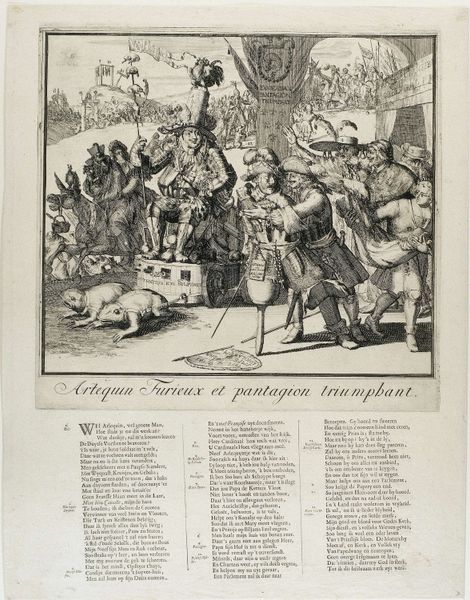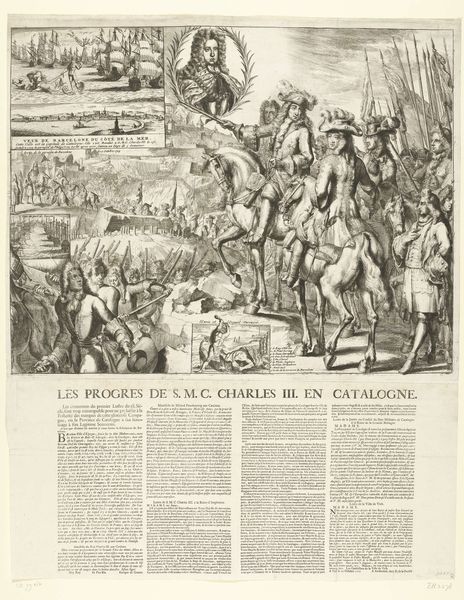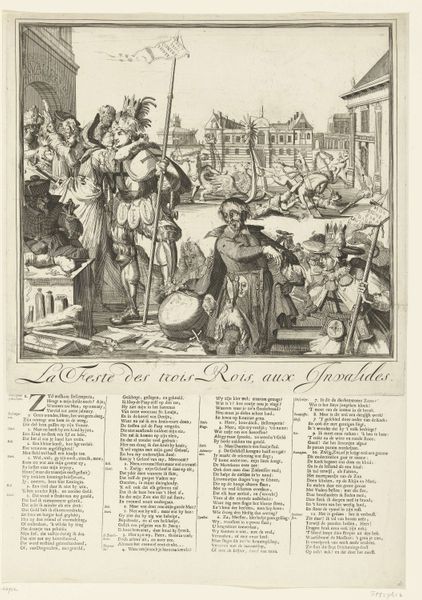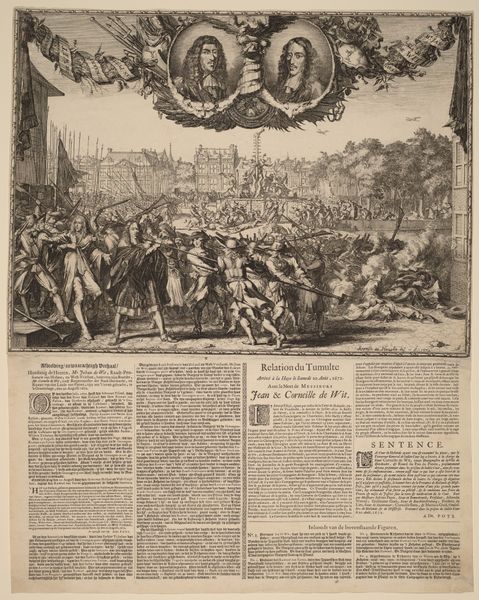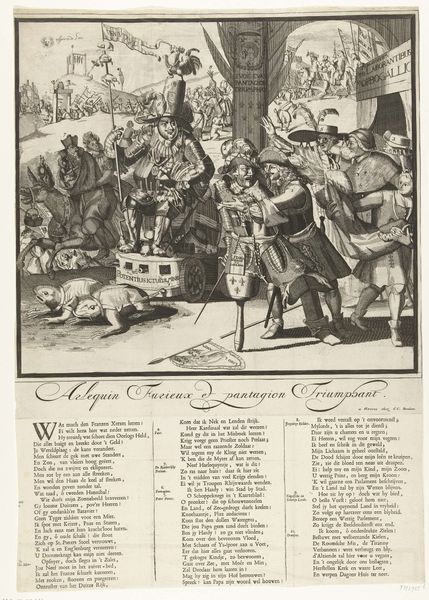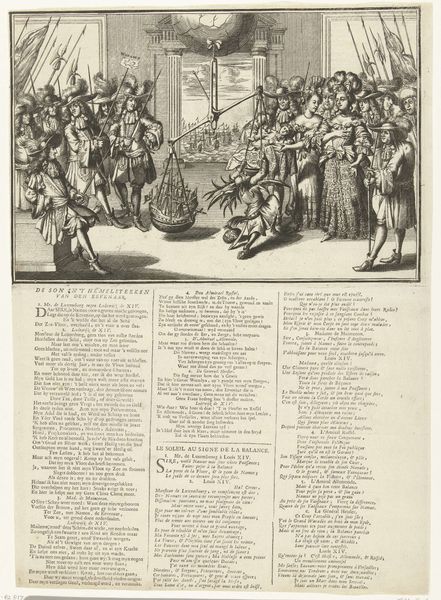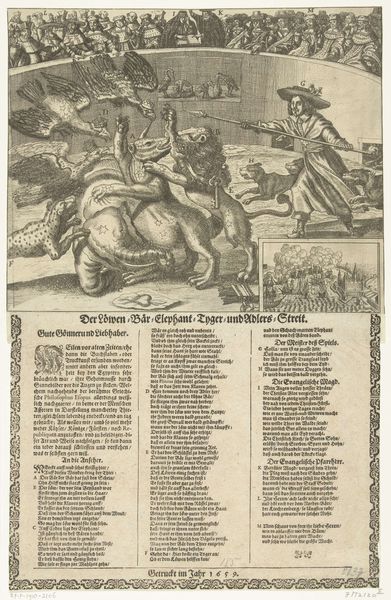
Spotprent op de gezamenlijke strijd van Lodewijk XIV en Jacobus II, 1689 1689
0:00
0:00
romeyndehooghe
Rijksmuseum
print, engraving
#
narrative-art
#
baroque
# print
#
cityscape
#
history-painting
#
engraving
Dimensions: height 584 mm, width 450 mm
Copyright: Rijks Museum: Open Domain
Curator: Looking at this piece, made in 1689 by Romeyn de Hooghe, titled "Spotprent op de gezamenlijke strijd van Lodewijk XIV en Jacobus II", which translates to "Print on the joint battle of Louis XIV and James II," what’s your initial read? Editor: Chaos! It feels utterly chaotic. There's this grotesque, almost nightmarish quality. Figures piled upon figures, like a grotesque parody of power, etched with sharp, almost cruel lines. Curator: Indeed. De Hooghe, a master of Dutch Baroque engraving, doesn't hold back in expressing his political views. It is meant to lampoon the alliance between Louis XIV of France and James II of England against William of Orange, who later became King William III of England. This was a critical moment in European power struggles. Editor: So the central figures, clinging to that rather comical donkey, are meant to represent Louis and James? What’s with the bizarre animal and all the other characters crammed in? There is an entire universe of obscure and evocative figures to observe and examine, like symbols jostling for attention. Curator: The "hypogryphe" or griffin-like donkey, it’s not a creature of glory! Notice the Pope flag they are wielding, symbolising papist agenda of Louis XIV. And all this happens amongst dead bodies in the war fields, where it's impossible to get any glory, which is meant to depict not so honourable alliance with French. De Hooghe’s engraving becomes a powerful critique of their perceived tyranny. Editor: It makes it obvious with the title "Army of the Holy Language for the Jesuit Monarchy"! In the image, are the figures on the left somehow being supported, or upheld, perhaps by more establishment power? They seem to be clinging on for dear life, almost being eaten! And what's with the ship, being surrounded and attacked! Curator: The ship represents the Dutch Republic struggling against those threats. This print was very influential in shaping the anti-French, pro-William of Orange sentiment in the Netherlands at the time. The printing press became a tool to sway public opinion! Editor: This certainly gives visual form to a complex and contentious moment in history. It's interesting to think about the psychological impact it would have had. I see the city behind the image as some form of destruction. It really encapsulates political conflict and personal ambition as chaotic, brutal, and absurd. Curator: And it speaks to the enduring power of art to not only reflect, but to actively participate in the making of history. We are grateful to look at this unique take on art today.
Comments
No comments
Be the first to comment and join the conversation on the ultimate creative platform.
